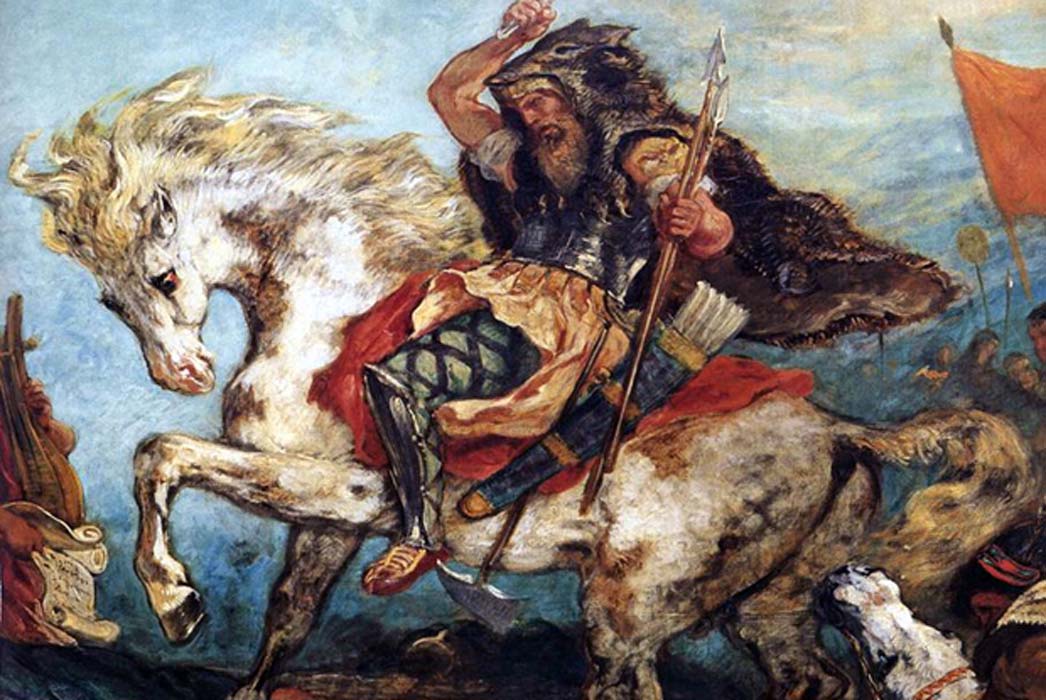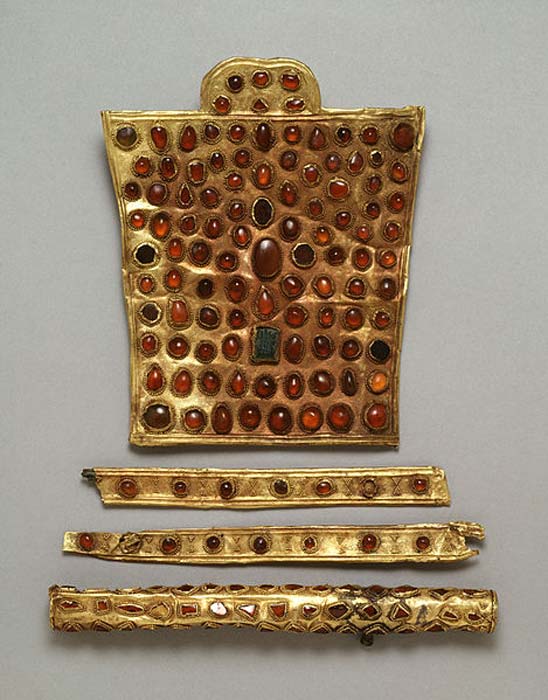
The Hunnic War Machine: Horsemen of the Steppe – Part II
The fifth century politician and bishop Sidonius Apollinaris, wrote an interesting description on the horsemanship of the Huns, stating, “You would think the limbs of man and beast were born together, so firmly does the rider always stick to the horse.” Such were the abilities of the horsemen of the steppe – an integral part of the success of the Hunnic Invasion and the creation of an empire.
[Read Part 1: The Hunnic War Machine: The Push Westward]
Hunnic Horsemen
Being that the majority of the Hunnic cavalry consisted of light horse archers led by petty nobles and their followers, their attire would have been light. The sixth century scholar Procopius states that the Hunnic warrior/herdsman wore “loosely woven” garments. Ammianus, much earlier, describes the dress of the Huns stating:
“They dress in linen cloth or in the skins of field-mice sewn together, and they wear the same clothing indoors and out. But when they have once put their necks into a faded tunic, it is not taken off or changed until by long wear and tear it has been reduced to rags and fallen from them bit by bit. They cover their heads with round caps and protect their hairy legs with goatskins; their shoes are formed upon no lasts, and so prevent their walking with free step.”
Being that the vast majority of Huns wore meager garments, their armor was not much better. In other words, do not expect the poorer Huns to be decked out in armor like the nobles or the wealthy. The type of armor worn would have been scale (sewn on) or lamellar (linked plates) armor reaching to the waist or knee. Hunnic armor also appears to have been sleeveless in some accounts. According to Procopius, he states:
“He came to be surrounded by twelve of the enemy, who carried spears. And they all struck him at once with their spears. But his thorax with-stood the other blows, which therefore did not hurt him much; but one of the Goths succeeded in hitting him from behind, at a place where his body was uncovered, above the armpit, right close to the shoulder, and smote the youth, though not with a mortal blow.”
While the Hunnic warrior could withstand a series of hits to the chest, his armpits were exposed, which indicates that his armor was sleeveless. Another interesting aspect is that the word thorax is used. This may suggest that the armor was not a breastplate but a metal shirt or scale-mail jacket, which protects all sides of the body and is sleeveless. The fourth century panegyric, Pacatus, Sidonius, and Procopius, all mention that the Hunnic horse archers wore iron cuirasses. While most Hunnic horsemen wore meager armor, those lucky enough to serve alongside Rome were decked out. Fifth century Latin poet, Flavius Merobaudes, mentions that Huns serving the Roman general Aetius wore “belts, quivers, horse, bits, helmets, and the armor, studded with precious stones, were gilded.

‘This fine and rare set of horse trappings is decorated with stones in beaded settings- a style Hunnish metalworkers favored. Fourth century. The large piece is a chamfron, which was worn on the horse's head above the eyes. This one is ornamental rather than defensive and indicated the wealth and power of the horse's owner.’ (Public Domain)
However, some of the Hunnic armor worn may have been Roman. Other Huns, not associated with Aetius, may have donned gilt Persian armor. Understand that the vast majority of Huns were not emblazoned in armor from head to toe, most wore meager amounts while the few nobles and wealthy Huns could afford the luxury of armor.




